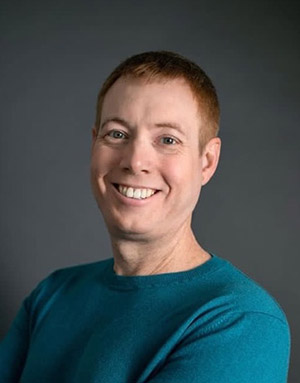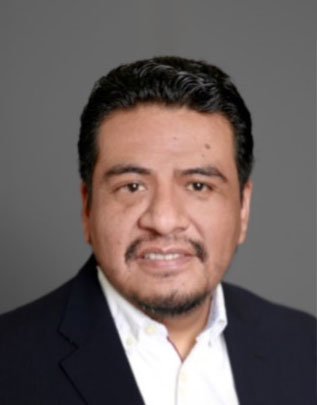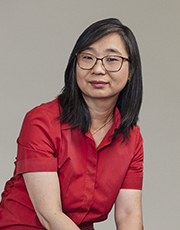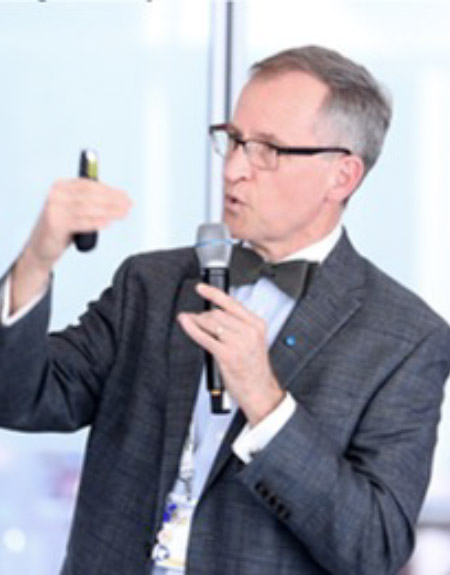IEEE LEO SatS and Space Environment Workshop

IEEE LEO SatS Space Environment Workshop • 2 May 2024 at 11 AM ET
On-Demand Recording Links
- Welcome and Introduction: Peng Hu
- Stresses on the Earth-Space System from LEO Satellite Systems: Aaron Boley
- The Mean is Meaningless: Darren McNight
- From Passive-Optical Observation to High-Power Laser Irradiation — DLR-TP Activities on Space Debris Detection and Mitigation: Stefan Scharring
- Nanosatellite Technologies for Space Situational Awareness: Regina Lee
- Space Robotics-based ISAM to Support Space Debris Mitigation: Angel Flores-Abad
Low Earth orbit (LEO) satellites have many advantages over other satellites and ground communication systems: communication that can be both higher data rate and lower latency, better coverage of remote area and lower costs than other solutions. With compelling benefits there has been significant growth in the number of LEO satellites, with even greater future growth forecast.
This raises questions of how the regions of space used by LEO satellites will be affected by this growth. Space debris is already a concern, and the addition of tens of thousands – or more – LEO satellites raises a number of questions.
This IEEE Low Earth Orbit Satellites and Systems Space Environment Workshop covered the impact LEO Satellites are likely to have, and how we can gain the benefits these satellites while minimizing potential negative consequences.
This event was organized by:
Peng Hu, Associate Professor with the Department of Electrical and Computer Engineering, University of Manitoba, and Adjunct Professor with the Cheriton School of Computer Science, University of Waterloo, Canada
Speakers:
- Dr. Aaron Boley, associate professor in the Department of Physics and Astronomy at the University of British Columbia
- Talk Title: Stresses on the Earth-Space System from LEO Satellite Systems
- Dr. Regina Lee, professor in the Department of Earth and Space Science and Engineering at York University, Canada
- Talk Title: Nanosatellite Technologies for Space Situational Awareness (SSA) Space Robotics-based ISAM to Support Space Debris Mitigation
- Dr. Darren McNight, Senior Technical Fellow for LeoLabs
- Talk Title: The Mean is Meaningless
- Dr. Stefan Scharring, German Aerospace Center (DLR)
- Talk Title: From Passive-Optical Observation to High-Power Laser Irradiation: DLR-TP Activities on Space Debris Detection and Mitigation
- Dr. Angel Flores-Abad, The University of Texas at El Paso, Texas, USA
- Talk Title: Space Robotics-based ISAM to Support Space Debris Mitigation
| Start (EDT) | Duration | Speaker | Topic |
|---|---|---|---|
| 11:00 AM | 9 min | Peng Hu | Welcome & Introduction |
| 11:09 AM | 1 min | Speaker Introduction & Handover | |
| 11:10 AM | 25 min | Aaron Boley | Stresses on the Earth-Space System from LEO SatS |
| 11:35 AM | 5 min | Q&A, Speaker Introduction & Handover | |
| 11:40 AM | 25 min | Darren McKnight | The Mean is Meaningless |
| 12:05 PM | 5 min | Q&A, Speaker Introduction & Handover | |
| 12:10 PM | 25 min | Stefan Scharring | From Passive-Optical Observation to High-Power Laser Irradiation: DLR-TP Activities on Space Debris Detection and Mitigation |
| 12:35 PM | 5 min | Q&A, Speaker Introduction & Handover | |
| 12:40 PM | 25 min | Regina Lee | Nanosatellite Technologies for Space Situational Awareness (SSA) |
| 1:05 PM | 5 min | Q&A | |
| 1:10 PM | 5 min | All | Wrap-up & Closing Remarks |
| On-demand presentation | 25 min | Angel Flores-Abad | Space Robotics-based ISAM to Support Space Debris Mitigation |
Presentation Topics and Speaker Bios:
Talk Title: Stresses on the Earth-Space System from LEO Satellite Systems
Speaker: Aaron Boley, associate professor in the Department of Physics and Astronomy at the University of British Columbia
Abstract: Humanity’s rapid and accelerating expansion into outer space, including the proliferation of satellites in LEO, presents many opportunities for society. Indeed, satellites already play vital roles in weather forecasting, food production, forest fire detection, climate science, communications, navigation, search and rescue, disaster relief, military operations, and arms control verification. However, there are also negative consequences, from the loss of dark and radio-quiet skies, to space debris and collision risks on orbit, casualty risks from reentering rocket bodies and satellites, and changes to the atmosphere from both launches and reentries.
These negative consequences arise because space is generally not regarded as an environment in need of protecting, nor is it seen as being closely connected to Earth’s environment. In reality, the two are so closely related that we need to speak of the Earth-Space system. This talk highlights several of the interconnected challenges associated with humanity’s growing use of outer space. By understanding and confronting our impact on the Earth-Space system, we can better develop sustainable paths forward, ensuring not just the preservation of the Earth-Space environment, but long-term access and use of Earth orbits.
 Aaron Boley is an associate professor in the Department of Physics and Astronomy at the University of British Columbia. His research explores a wide range of topics, including planetary dynamics, astrophysical discs, meteoritics, space sustainability and security, and space policy. Before joining the faculty at UBC, Boley was a NASA Sagan Postdoctoral Fellow at the University of Florida and a postdoctoral researcher at the Institute for Theoretical Physics at the University of Zurich. He is the Co-Director of the Outer Space Institute and co-author of Who Owns Outer Space? International Law, Astrophysics, and the Sustainable Development of Space.
Aaron Boley is an associate professor in the Department of Physics and Astronomy at the University of British Columbia. His research explores a wide range of topics, including planetary dynamics, astrophysical discs, meteoritics, space sustainability and security, and space policy. Before joining the faculty at UBC, Boley was a NASA Sagan Postdoctoral Fellow at the University of Florida and a postdoctoral researcher at the Institute for Theoretical Physics at the University of Zurich. He is the Co-Director of the Outer Space Institute and co-author of Who Owns Outer Space? International Law, Astrophysics, and the Sustainable Development of Space.
Talk Title: Space Robotics-based ISAM to Support Space Debris Mitigation
Speaker: Dr. Angel Flores-Abad, The University of Texas at El Paso, Texas, USA
Abstract: Thousands of space objects are orbiting the Earth, and exponential growth is expected in the following two decades. Some of those objects are spacecraft that got broken, malfunctioned or ran out of fuel. In any case, inoperational satellites are part of the hundreds of pieces of space debris that place a high risk of collision in orbit. Therefore, active methods for space e removal and mitigation are required. Space robots have been raised as an option to capture space malfunctioning space objects for repair and refueling. Not only that, but with the increasing capabilities to manufacture and assemble objects in orbit, new efforts to build tools or manufacture the broken components in orbit are also becoming an avenue to repair space assets and as a result, reduce space debris now and in the future. In this presentation, such as efforts are aligned in the context of ISAM (In-space Servicing Assembly and Manufacturing). The presentation also introduces different cases where space robots show the potential to support space debris mitigation actively.
 Dr. Angel Flores-Abad is an assistant professor at the Aerospace and Mechanical Engineering Department at the University of Texas at El Paso and a researcher at the Aerospace Center at the same institution. His area of interest lies in Robotics and Autonomous systems for space, aerial, and industrial applications.
Dr. Angel Flores-Abad is an assistant professor at the Aerospace and Mechanical Engineering Department at the University of Texas at El Paso and a researcher at the Aerospace Center at the same institution. His area of interest lies in Robotics and Autonomous systems for space, aerial, and industrial applications.
He has worked to provide autonomous capabilities in the NASA asteroid robotic sampling mission, AFRL, and DLR’s EPOS (European Proximity Operations System). His research has been sponsored by DOE, NSF and NASA. Dr. Flores-Abad is a member of the AIAA (Space Automation and Robotics Technical Committee).
Talk Title: Nanosatellite Technologies for Space Situational Awareness (SSA)
Speaker: Dr. Regina Lee, professor in the Department of Earth and Space Science and Engineering at York University, Canada
Abstract: Space systems play an important and integral role in every facet of our daily lives, including national security and resource management. Therefore, it is critical to protect our valuable assets in space through space surveillance and build resiliency in space systems. In this presentation, an overview of technology advancement in the space research, in particular, nanosatellite (smaller than 10 kg) missions for space surveillance are discussed. Most significant advancement in nanosatellite technologies came alongside the advances in microsystems technologies. It has been a focus of our research team at York University, to develop a series of nanosatellite technologies that will lead us to an advanced scientific mission in near future. Several technologies are under development including optical phased array design, sun sensor development and star trackers. In particular, our recent effort is on (1) nanosatellite attitude control system and (2) resident space object (RSO) detection and identification using a wide field of view cameras such as star trackers. Two key technologies – digital sun sensor design on IRIS mission (Geology mission on a CubeSat platform) and RSONAR mission onboard Stratos Balloon platform are presented as examples of technology development for space-borne scientific missions.
In developing a digital sun sensor (DSS), significant improvements in the design is enabled by advanced micro-systems fabrication and optical sensing technologies. For the IRIS mission, we developed a simple single-slit DSS concept with improved accuracy using sub-pixel interpolation. In considering the DSS design, we focused on several characteristics of the sun sensor, including field-of-view, sensor accuracy, complexity, and computational requirements. From the simulation study, the optimal mask design was determined based on the simple geometry of the slit size, mask height and pixel width. The final demonstration from the in-orbit operation of IRIS is expected once the communication to the satellite is established. Second payload, RSONAR technology demonstration payload, Resident Space Object Near-space Astrometric Research (RSONAR) is a star tracker-like, wide FOV camera combined with commercial off-the-shelf (COTS) hardware to image RSOs from the stratosphere, overcoming the disadvantages of ground-based observations. This newly developed payload in a 2U-CubeSat form factor was flown as a space-ready payload on the CSA/CNES stratospheric balloon research platform to carry out algorithm and functionality tests in August 2022. Results and lessons learned from the campaign are described in the presentation.
 Professor Regina Lee, PhD, PEng, Professor of Space Engineering has led numerous projects in the area of satellite technologies including the design of micro-sensors and actuators, micro-spectrometer development, solar panel technology demonstration and attitude control design for nanosatellites.
Professor Regina Lee, PhD, PEng, Professor of Space Engineering has led numerous projects in the area of satellite technologies including the design of micro-sensors and actuators, micro-spectrometer development, solar panel technology demonstration and attitude control design for nanosatellites.
Her research focuses on application of micro-systems technologies in satellite design in close partnership with a number of industry and government research partners including DRDC, Honeywell, Magellan and MSCI.
Talk Title: The Mean is Meaningless
Speaker: Dr. Darren McKnight
Abstract: The low Earth orbit (LEO) space object population can best be described as consisting of clusters of derelict objects, clouds for fragments, and constellations of smallsats. These constituents combine in different ways at different altitudes that result in drastically varying neighborhoods throughout LEO. The LEO population and the resulting collision risk is examined through the lens of balancing (1) risk burden posed by each of the three components of the LEO population in tandem with the (2) risk that is abated through best practices and (3) the persistence of the objects.
 Dr. Darren McNight is currently Senior Technical Fellow for LeoLabs. Darren leads efforts to realize the value proposition for the growing global network of ground-based radars for space situational awareness, space safety, and space sustainability. He creates new data depictions, develops risk algorithms, and leads space incident investigations. He is focusing on creating new statistical collision risk assessment approaches to provide valuable context to the operational collision avoidance support provided by LeoLabs worldwide.
Dr. Darren McNight is currently Senior Technical Fellow for LeoLabs. Darren leads efforts to realize the value proposition for the growing global network of ground-based radars for space situational awareness, space safety, and space sustainability. He creates new data depictions, develops risk algorithms, and leads space incident investigations. He is focusing on creating new statistical collision risk assessment approaches to provide valuable context to the operational collision avoidance support provided by LeoLabs worldwide.
As a member of the International Academy of Astronautics’ Space Debris Committee, he has been active in position paper development, selection of symposia papers, and execution of the annual International Astronautical Congress. His current focus is on developing technical solutions and encouraging global behavior that leads to sustained space operations assurance through limiting the risk of debris collision hazard to space systems in Earth orbit. Recent efforts have shown that the greatest debris-generating potential in low Earth orbit comes from the thousands of massive derelict objects deposited over the last 60 years and not from the recent proliferation of smallsat constellations. He has coauthored five books ranging from space debris and spacecraft operations to soccer coaching and innovation. Darren has authored over 120 technical papers and presented them in 21 countries including guest lectures at ten universities globally.
Talk Title: From Passive-Optical Observation to High-Power Laser Irradiation: DLR-TP Activities on Space Debris Detection and Mitigation
Speaker: Dr. Stefan Scharring, German Aerospace Center (DLR)
Abstract: With the strong increase in the number of space debris objects due to spontaneous debris-vs-debris collisions, the highly frequented orbital regime around 800 km has finally arrived at the dawn of the Kessler Syndrome. But it is not only the number of debris objects that can be expected to increase exponentially, the number of newly launched satellites raises in a similar way while, to our knowledge, not a single debris object has ever been actively de-orbited up to now. The related risks of mutual collisions are far from impacting only the orbital environment itself. In fact, the potential economic damage of large-scale satellite failures underlines the necessity of substantial efforts for sustainable operations in space.
As an adaptation to the space situation, exhaustive awareness of potential collisions is needed. While more than 35,000 debris objects are tracked and catalogued already, this only constitutes less than 4% of all potentially mission-terminating debris with a size greater than 1 cm. To counteract the large number of untracked space debris in the low Earth orbit, methods for passive-optical debris detection by sunlight reflections in twilight are developed and explored at the DLR Institute of Technical Physics (DLR-TP). With this initial information from the debris, object tracking is undertaken allowing for high-precision laser-based ranging measurements from various facilities of our institute. The recorded data is employed in our numerical models for orbit prediction and serves for conceptual work on ranging station network architectures for reliable orbital data striving to an exhaustive coverage of a multitude of small debris objects down to sizes of only a few centimeters.
While our activities on space situational awareness respond to the demand for more comprehensive capabilities in collision avoidance, related maneuvers can only be carried out if at least one of the conjunction partners can actively be maneuvered. For the initially mentioned mutual collisions among different space debris objects, this is not the case – yet. In principle, such objects might be movable remotely from ground using light-matter interaction processes like photon pressure or laser ablation, induced remotely from a high-power/high-energy laser on ground. Conceptual studies on laser-driven collision avoidance are presented which open up the perspective to even de-orbit a multitude of debris fragments using ground-based lasers.
Whereas future high-power laser systems for space debris removal still require substantial development efforts, the potential of passive-optical observations for space sustainability should not be underestimated: Temporal intensity fluctuations of the sunlight reflected from debris can already reveal valuable information on its rotational behavior. Hence, these lightcurves are analyzed in order to support in-orbit capture missions – serving as well for space sustainability by active debris removal.
 Dr. Stefan Scharring studied physics at the University of Freiburg, Germany, where he received his diploma degree in 2000. From the University of Stuttgart, Germany, he received his PhD degree in aerospace engineering in 2013 for his thesis on laser-thermal propulsion.
Dr. Stefan Scharring studied physics at the University of Freiburg, Germany, where he received his diploma degree in 2000. From the University of Stuttgart, Germany, he received his PhD degree in aerospace engineering in 2013 for his thesis on laser-thermal propulsion.
Dr. Scharring works as a laser scientist at DLR in the field of numerical modelling. His expertise comprises numerical simulations on laser-matter interaction in the fields of laser propulsion and space debris remediation. Moreover, laser safety aspects as well as weather analysis for outdoor laser operations have been part of his expertise in recent studies.

